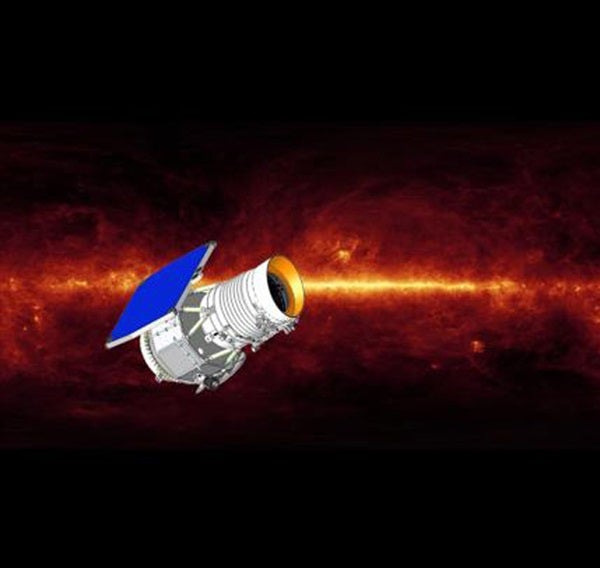NASA’s recently launched Wide-Field Infrared Survey Explorer ejected its protective cover and opened its eyes to the starry sky today.
Engineers and scientists say the maneuver went off without a hitch, and everything is working properly. The mission’s “first-light” images of the sky will be released to the public in about a month after the telescope is calibrated.
“The cover floated away as we planned,” said William Irace, the mission’s project manager at NASA’s Jet Propulsion Laboratory (JPL), Pasadena, California. “Our detectors are soaking up starlight for the first time.”
WISE will perform the most detailed infrared survey of the entire sky to date. Its millions of images will expose the dark side of the cosmos — objects such as asteroids, stars, and galaxies that are too cool or dusty to be seen with visible light. The telescope will survey the sky 1.5 times in 9 months, ending its primary mission when the coolant it needs to see infrared light evaporates.
WISE launched December 14 from Vandenberg Air Force Base in California. Once it was thoroughly checked out in space, it was ready to “flip its lid.”
The cover served as the top to a Thermos-like bottle that chilled the instrument — a16-inch (40-centimeter) telescope and four infrared detector arrays with one million pixels each. The instrument must be maintained at frosty temperatures, as cold as -447° Fahrenheit (-266° Celsius), to prevent it from picking up its own heat, or infrared glow. The cover kept everything cool on the ground by sealing a vacuum space in the instrument chamber. In the same way that Thermos bottles use thin vacuum layers to keep your coffee warm or iced tea cold, the vacuum space inside WISE stopped heat from getting in. Now, space itself will provide the instrument with an even better vacuum than before.
The cover also protected the instrument from stray sunlight and extra heat during launch.
At about 5:30 p.m. EST December 29, engineers sent a command to fire pyrotechnic devices that released nuts holding the cover in place. Three springs were then free to push the cover away and into an orbit closer to Earth than that of the spacecraft.
Scientists and engineers are now busy adjusting the rate of the spacecraft to match the rate of a scanning mirror. To take still images on the sky as it orbits around Earth, WISE will use a scan mirror to counteract its motion. Light from the moving telescope’s primary mirror will be focused onto the scan mirror that will move in the opposite direction at the same rate. This allows the mission to take freeze-frame snapshots of the sky every 11 seconds. That’s about 7,500 images a day.
“It’s wonderful to end the year with open WISE eyes,” said Peter Eisenhardt, the mission’s project scientist at JPL. “Now we can synch WISE up to our scan mirror and get on with the business of exploring the infrared universe.”
WISE is scheduled to begin its survey of the infrared heavens mid-January of 2010.










